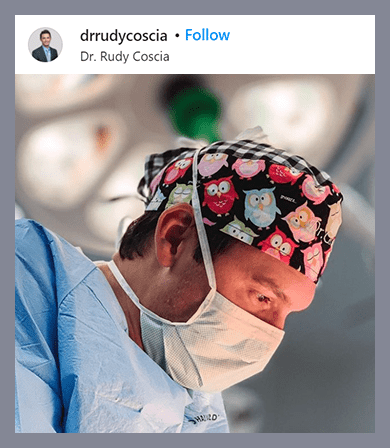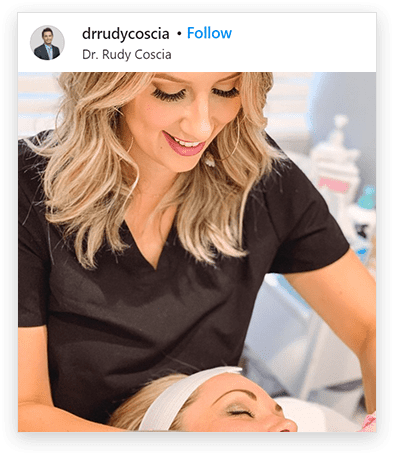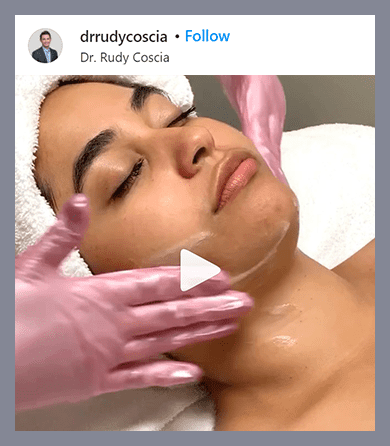
Facelift for Sacramento, Granite Bay, & Coeur d'Alene
The broad category of facial rejuvenation is a common topic of discussion during consults. Elements of facial rejuvenation range from minor skincare procedures, such as Botox and fillers, to the full extent of a formal facelift, more formally known as a rhytidectomy.
Patients often approach procedures on the face with more caution than other procedures because they fear unnatural results. This concern is fueled by media reports of celebrity extreme-makeovers. However, a correctly performed facelift provides a very natural and youthful result.
Home » Facelift
Facial Aging Process
Frequently, there is the misconception that facial aging is caused primarily by sagging excess loose skin. Obviously, this does play a role in the appearance of facial aging because skin loses its elastic properties. However, the more critical component of facial aging involves the underlying soft tissue and muscular layer of the face. Over time, everyone has the potential of losing facial fullness due to atrophy or shrinking of the underlying fatty tissue in the face. This can cause a hollowing that ages the face. 
In addition, there is a very important muscular layer in the face and neck called the “SMAS” layer and platysma, respectively. When we are young, this muscular layer is firmly adhered and fixated to the underlying skeletal structure due to tight ligaments. As one ages, these ligaments become weak and allow the muscular layer to settle with the pull of gravity. The factors of shrinking soft tissue and settling or sagging of the muscular framework characterize aging. The face also tends to convert from a V-shape that is associated with a youthful face into a more rectangular and long face that is more common with age. These factors along with other characteristics of facial aging, including hollowing and depression of the cheek area, deepened nasolabial folds, deepened marionette lines, jowling along the jawline, and redundancy in the neck can be improved with facial rejuvenation.
Facelift Procedure Details
As with all cosmetic plastic surgery, there is no procedure that can be considered “one-size-fits-all.” Therefore, in your consultation, we will discuss the issues that concern you the most in relation to the underlying anatomical reason, and then discuss the facelift procedure in its broader sense that will best treat your personal concerns. Traditionally, the full facelift procedure treats the crow’s feet region and the lateral brow extending downward to the cheek region in the mid-face, to the deepened lines around the mouth, as well as the jowling along the jawline, and finally, restoring a more acute and refined angle to the neck region. The incision begins within the hairline in the temporal region and extends downward following natural creases in front of the ear before it turns behind the ear, finally ending concealed within the occipital hair. There is also often a small incision underneath the chin for better access to the neck region. Through these incisions, we are able to elevate the skin of the face. Next, we address the critically important SMAS layer and platysma. This thin muscular layer is then elevated partially and secured tightly with sutures to reshape the foundation of the face. This restores the natural fullness and height of the cheek region, thereby restoring the youthful V-shaped contour of the face. In addition, addressing this layer is critically important for refining the jawline and removing the appearance of jowling, as well as tightening the neckline and converting it from a more lax C-shaped contour to a more acute right angle appearance. Once the foundation has been addressed, we are able to re-drape the skin naturally over this restored facial shape. This is the key component in achieving an optimal result while also maintaining a very natural result.
Procedures Frequently Combined with Facelift
 Facelift addresses the area of the face from the temples to the neck. Many of Dr. Coscia’s patients choose to pair facelift with another procedure to rejuvenate the top portion of the face. These combinations include:
Facelift addresses the area of the face from the temples to the neck. Many of Dr. Coscia’s patients choose to pair facelift with another procedure to rejuvenate the top portion of the face. These combinations include:
- Brow lift, which helps to diminish the horizontal forehead lines and vertical frown lines while also elevating the eyebrows to achieve a youthful arch
- Upper eyelid surgery, which tightens the eyelid muscles and removes the excess skin and fat that weigh down the upper lid, so that the eyes can open more fully
- Lower eyelid surgery, which focuses on smoothing out the hollows or “bags” just beneath the eyes for a refreshed and less tired appearance
- Fat grafting, which can transfer excess fat from another area of the body to restore lost volume to the face, especially the cheeks
- Laser resurfacing, which can help improve the tone and texture of the skin to further enhance the rejuvenating effects of facelift
Facelift Costs
Because Dr. Coscia customizes each facelift surgery, the cost depends on several factors, including the extent of the visible aging on your face. After examining your skin and listening to your goals during a consultation, Dr. Coscia can provide a complete cost breakdown so that you can make an informed decision. Facelift is an elective procedure and therefore not covered by health insurance. However, financing options are available through CareCredit and M-Lend Financial Services.
Facelift Testimonials
“I am amazed at my results. If you want a truly gifted surgeon, then Dr. Coscia is the plastic surgeon for you! I had a facelift with another doctor nine years ago: he charged the same amount of money for basically no improvement. Nine years later I have truly learned what a difference a good surgeon makes!”
– L.Y.
“I am over the moon. The transformation achieved by Dr. Coscia on my face and neck are spectacular. Finally, I look as young as I feel. His professionalism and attention to detail along with his super friendly and supportive staff made me feel right at home and confident in choosing this practice.”
– S.L.
“I was really concerned that I would look plastic or weird. But most people don’t even realize I had anything done and comment on how beautiful my face looks. They can’t believe I have children who are in their late 20s. This is just the reaction I wanted.”
– J.P.
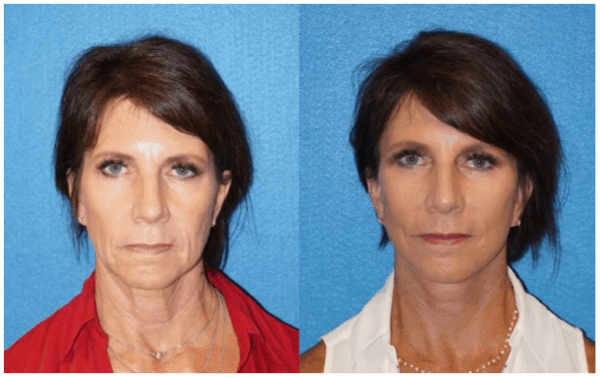
Facelift Recovery Timeline
Surprisingly, a facelift is associated with fairly minimal pain; that is not to say there is not some discomfort. You should expect the acute recovery phase of a facelift to last approximately two weeks. During this time, you will have fairly noticeable swelling and a degree of bruising that tends to be patient-specific. You will only have a head dressing for approximately two to three days. At that point, no additional dressings will be needed. Obviously, the incisions will take several months to fully fade, however, because of their location, most people, especially women, are able to hide the healing incisions quite well with their hair.
*Individual Results May Vary
Facelift FAQ
Am I a candidate for facelift?
Individuals with any of the typical signs of facial aging are usually good candidates for the procedure, especially when droopiness appears on the cheeks, in the jowls and along the jawline. Ideal candidates may have developed lines near the mouth and creases beneath the eyes. In addition to tightening skin and smoothing out wrinkles, facelift is a popular solution to areas of the face that have lost volume and appear sunken or hollow. Facelift also removes some types of fat, especially under the chin, and even has a positive effect on skin tone. In short, facelift is a great way to turn back the clock to a time when your skin was naturally vibrant, smooth and supple.
How long will the results of facelift last?
Facelift patients can expect at least a decade of enhanced facial appearance. The surgery has myriad benefits that extend your rejuvenated appearance for years, including tightening skin and subdermal muscles, targeting displaced fat and even improving the strength and integrity of facial skin. You can magnify the benefits of facelift by making wise lifestyle choices. Avoiding smoking is one of the best ways you can maintain the youthful glow you achieved with facelift; and limiting your exposure to the sun’s ultraviolet rays will prevent harm to skin tone and texture.
Will it be necessary to repeat the procedure?
When your skin again begins to show moderate signs of aging, a repeat facelift does not need to be your primary option. There are many new non-surgical choices for enhancing and preserving the results of facelift. The ever-expanding array of dermal fillers provides quick, convenient revitalization by plumping up volume in targeted areas while stimulating your body’s production of collagen and elastin.
Laser skin resurfacing is another way to tighten skin, thereby smoothing out fine lines and wrinkles. In addition, new types of radiofrequency (RF) energy treatments produce a similar tightening effect by agitating deep tissue, releasing collagen and elastin, and moderately shrinking pockets of unwanted fat.
How can I ensure the most natural-looking outcome?
Fear of surgical failure is a key reason why some patients who would normally benefit tremendously from facelift choose not to undergo the procedure. We’ve all seen the photos of celebrities whose facial procedure left them almost unrecognizable, ruining their looks and often their careers. We may have friends or colleagues whose facelift was immediately recognized by others — not because of its elegance, but rather for its unnatural or “done” appearance. There are even some colorful terms that have been coined to refer to this phenomenon, including the “open cockpit,” “windswept,” “pulled” or “frozen” look.
The key to avoiding these unfortunate outcomes is selecting a surgeon who has mastered both the technical precision and surgical artistry needed to achieve beauty, proportion and refinement. The technical aspect includes the judgment to focus on facial muscles as well as surface skin, stretching each anatomical element in a balanced way to achieve a harmony of features.
Is a mini facelift worth it?
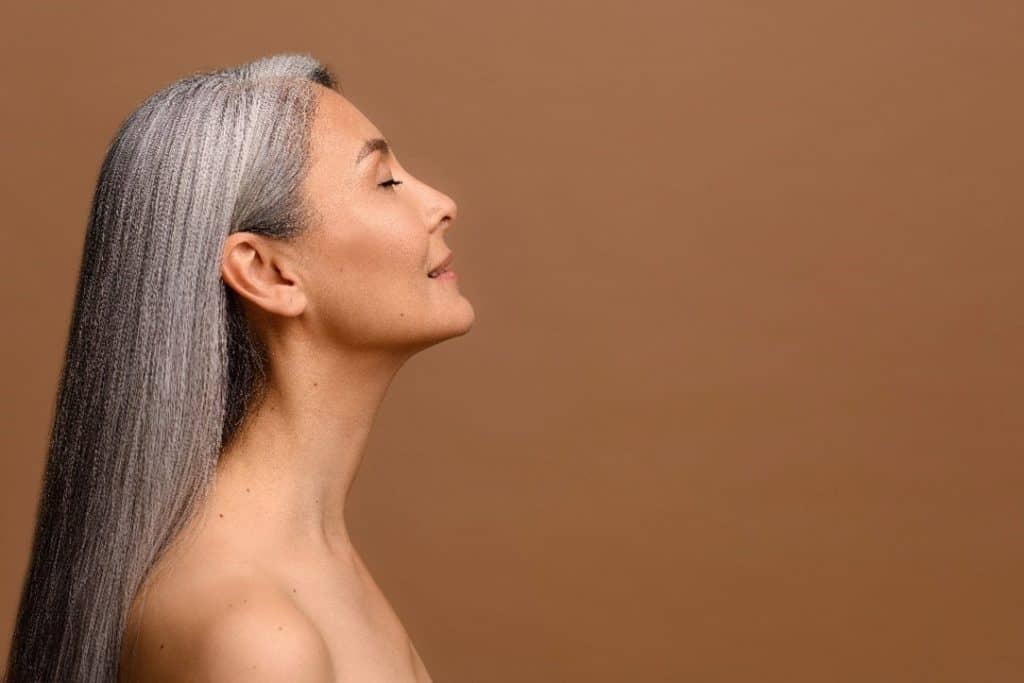 While “mini facelift” sounds like an appealing option to patients who would prefer a shorter recovery period, Dr. Coscia recommends the standard facelift procedure to his patients. Mini facelift uses “cheat” techniques to lightly pull the musculature around the jawline, but that can leave the face looking unnatural and uneven. With full facelift, Dr. Coscia addresses the area from the temple all the way to the neck. By repositioning the muscles throughout the face and neck, he can best achieve long-lasting results that ensure you still look like a younger version of yourself.
While “mini facelift” sounds like an appealing option to patients who would prefer a shorter recovery period, Dr. Coscia recommends the standard facelift procedure to his patients. Mini facelift uses “cheat” techniques to lightly pull the musculature around the jawline, but that can leave the face looking unnatural and uneven. With full facelift, Dr. Coscia addresses the area from the temple all the way to the neck. By repositioning the muscles throughout the face and neck, he can best achieve long-lasting results that ensure you still look like a younger version of yourself.
What is a liquid facelift?
Liquid facelift is a term used to describe non-surgical facial rejuvenation performed with dermal fillers. Hyaluronic acid-based injectables like Juvederm can help to diminish lines and restore youthful volume to the skin. The results are generally satisfying for patients who would prefer to avoid surgery, but they are not as dramatic or long-lasting compared to what traditional facelift surgery can achieve.
FACELIFT WITH DR. COSCIA
Schedule Facelift Consultation
The information provided is only a brief overview of the facelift procedure. If you have some interest in learning more or how it may help you, please feel free to contact our office and set up a consultation with Dr. Coscia. He will discuss your specific concerns and what facial rejuvenation procedures will give you the best results. Also, you may view the facelift photo gallery to see results of actual patients.
Dr. Coscia’s practice also serves Coeur d’Alene, ID, and the Rocklin and Loomis areas. Please fill out the form on this page to request a consultation or call our call his Granite Bay (916) 249-2863 or Sacramento (916) 318-5826 locations to request a consultation today.











